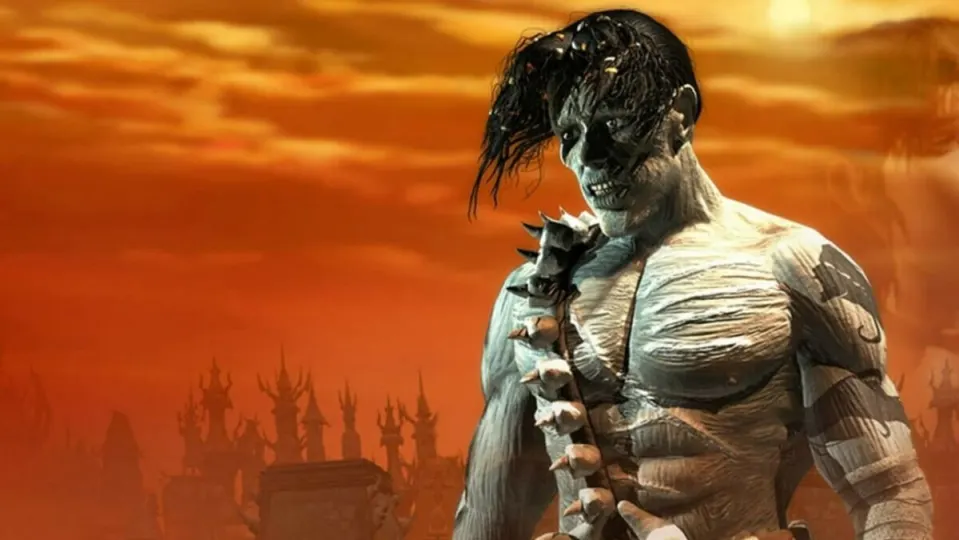Baldur’s Gate 3 is a huge, fabulous, absolutely amazing game, but it has one thing going for it: it’s not too faithful to the Dungeons & Dragons rules. That’s a good thing. It suits it. But that doesn’t take away from the fact that it might disappoint some people. That’s why we’ve chosen a selection of games that, besides being absolute classics, are extremely faithful to the Dungeons & Dragons rules. For better or for worse. Something that will help us to put into perspective also why Larian has taken the decision to skip a little bit the rules they have imposed themselves.
Baldur’s Gate 2: Shadows of Amn
Baldur’s Gate has always been Wizards of the Coast’s flagship franchise. The game that made Dungeons & Dragons extremely popular and went where none of the other games, licensed or otherwise, had ever gone before. But where Baldur’s Gate, the first installment, was a success and managed to demonstrate what was possible to do with the rules of the board game, the one that really hit the table was the second installment of the saga.
Baldur’s Gate 2: Shadows of Amn was published in 2000 and was based on the rules of Advanced Dungeons & Dragons second edition. Being very faithful to the rules of the game, it took many of the characteristics of the strategy games of the time: isometric view, fog of war, and the ability to position our characters in groups according to different formations. Its greatest merit, in fact, was to take the base of the first, polish it and take it further. its main story was 50 or 60 hours, but the full game will range between 200 or 300. A true predecessor of which Baldur’s Gate 3 is at the height, even if it is a little more unfaithful to the rules.
Tales From Candlekeep: Tomb Of Annihilation
Dungeons & Dragons accommodates many different systems. It has had many different versions, some of them resembling each other like an egg to a chestnut, and that is why we must be flexible about what Dungeons & Dragons is. Understand that a game is more or less close to Dungeons & Dragons according to how much it fits the rules it takes as a reference, something that is not always evident at first sight when we talk about things as peculiar as Dungeons & Dragons: Adventure System.
Tales From Candlekeep: Tomb Of Annihilation is basically a board game version of Dungeons & Dragons. In fact, it’s a board game adaptation of Tomb of Annihilation. It’s extremely faithful and even mimics the aesthetics of a board game. That makes a lot of people look down on it. This is not role-playing. It’s not good role-playing. And it’s true. It is the adaptation to a board game of the rules of a role-playing game that has been taken to the context of a video game. But that’s why it’s extremely faithful. Because it’s the rules, as presented to us in the board game. If you’re attracted to the idea, it’s a nice, simple game that gives what it offers: a simple solo experience of a board game. Nothing deep, but something very faithful.
The Temple Of Elemental Evil
Baldur’s Gate is the most famous and important of the Dungeons & Dragons games. The one that managed to reach the mainstream and popularize a form of RPG that went with what was popular at the time in the PC sphere, the RTS, and that would remain so for the next ten years. But that doesn’t mean that’s where faithful Dungeons & Dragons games ended. Or that there isn’t a game that would be considered the most absolutely faithful game, to the point of being brutal and cruel, that has ever taken the form of a video game.
The Temple of Elemental Evil is an adaptation of a mythical Dungeons & Dragons adventure created by Troika Games, the people behind masterpieces like Arcanum: Of Steamworks and Magick Obscura or Vampire: The Masquerade – Bloodlines. Following the rules of Dungeons & Dragons 3.5 edition, it followed the rules with an almost cruel precision. How cruel? Many players never got past the first level because of the game’s difficulty. And the game had two difficulty modes: Normal and Ironman. The second one being the one that followed more closely the original rules of the paper and pencil game. And that made it even more brutally difficult.
Dark Sun: Shattered Lands
Although today we associate Dungeons & Dragons with a certain fantasy closely associated with Tolkien and European myths, the reality is that Dungeons & Dragons has historically had many settings that fall outside that norm. In Baldur’s Gate 3 we’ve been able to see a bit of that, but it’s been barely dipping a toe into the turbulent waters of other universes much richer and more fascinating than Faerûn. For example, the land of Athas, where Dark Sun: Shattered Lands is set.
Following the rules of Advanced Dungeons & Dragons second edition, Dark Sun: Shattered Lands introduces us to a world very different from the one we are used to: everything is desert, magic is strange, races are completely different from the normal ones and psionic powers are the norm. In addition, the dice rolls are different and everything is more lethal. In fact, this game, which drew heavily from the Ultima series, wanted to mimic that: how the Dark Sun universe is brutal and terrible, to the point of cruelty. Something that, ironically, was lost by its fidelity to the rules – getting Dungeons & Dragons before third edition to feel lethal is hard work.
Eye Of The Beholder
When we think of role-playing games, we think of games where we see the characters in 3D. When we think of Dungeons & Dragons games, we also think of games in isometric view. Ironically, this is the most recent case, because historically, the vast majority of Dungeons & Dragons games have been a type of role-playing game that does not fulfill either of these two things: they have been dungeon crawlers with a first-person perspective. Something in which Eye of the Beholder is no exception.
The game is in first person. Let’s navigate a three-dimensional dungeon. And in fact, do not expect any narrative depth: the grace here is to get to the depths of the dungeon and not much more. We start with four characters, it can be increased up to six, and much of the fun is that the game simulates as much as possible the rules of Dungeons & Dragons. Of course, it does it in its own way. It hides the rolls from us, puts us in more puzzle-solving situations than combat, and it feels more like there’s someone directing us through a purposefully designed dungeon. But that’s why it’s more faithful. Because in that hiding, it really feels like a Dungeons & Dragons game.
Planescape Torment
Few RPGs deserve the title of classic more than Planescape Torment. And it does so because it is not like other RPGs. Here combat is the least of it. Exploring, dialoguing, reflecting, solving puzzles and knowing when to move and where to go is much more important than any combat we can undertake. That is why Planescape Torment is still remembered today as one of the great masterpieces of the RPG, as well as having served as a great influence for contemporary masterpieces, such as Disco Elysium.
So how is it faithful to the rules of Dungeons & Dragons, a game very focused on combat? Ironically, in the importance of decisions that don’t seem to matter. Our alignment on the good-evil and chaos-law axis is all-important, our class completely changes what we can do at any given moment, and our attribute scores determine which path will be easiest to follow without encountering constant failure. By avoiding combat, it makes stats and rules more relevant. Because that’s the great trick of Planescape Torment: it discovered that in an RPG, the most important thing is the role-playing part.
Algunos de los enlaces añadidos en el artículo forman parte de campañas de afiliación y pueden representar beneficios para Softonic.


